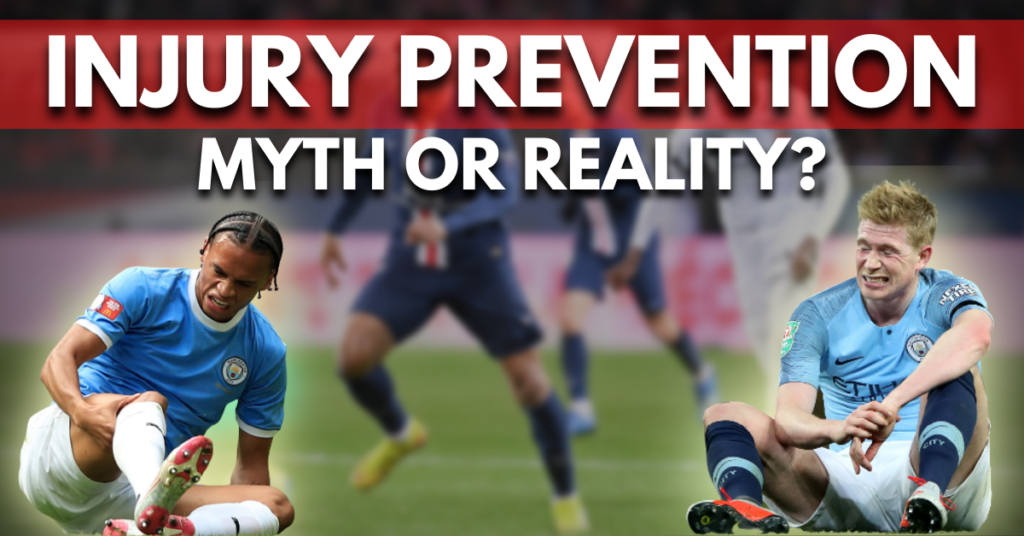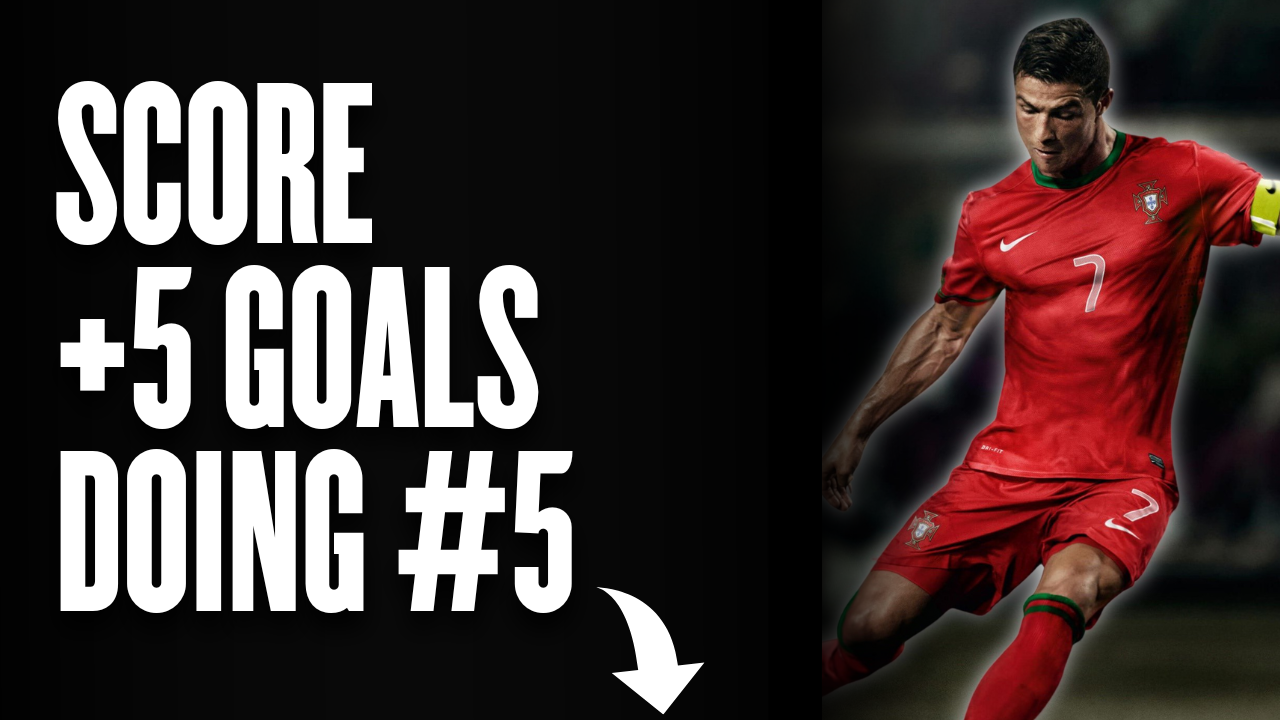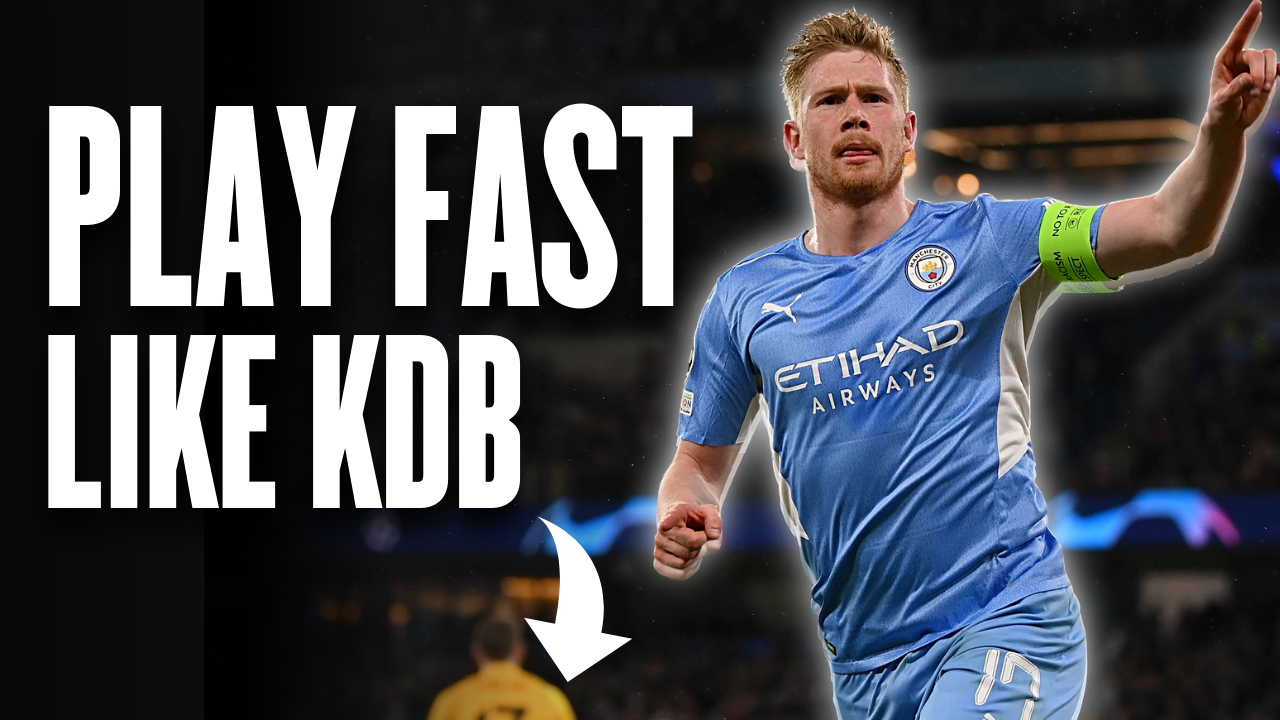
We constantly see trainers, coaches, physiotherapists, and other people in the industry, talking about injury prevention. In particular, they talk about certain protocols that they believe will prevent one or multiple injuries.
Football is a contact sport that places really high physiological demands on the player. Injuries can occur both through contact and non-contact. The most common football injuries include hamstring strains, ACL and meniscus tears, Achilles tendon ruptures, and general tendinopathies.
There are many exercise and health specialists who will claim that they can prevent these (and many other) injuries. But does this make sense? Can we really prevent an injury? Or is it just another marketing gimmick that many health and performance specialists deliberately (or unwittingly) use to attract more athletes?
INJURY PREVENTION DOES NOT EXIST
(Unfortunately) the truth is that we can’t prevent an injury. You see, performance (and therefore injuries that occur during a performance) is based on many factors (controllable and not). Injuries are therefore multifactorial. This means that the cause of an injury can occur through/because of various mechanisms/factors.
Some of them can be controlled and some others not. This makes injury prevention unlikely. On the contrary, it makes it possible (and logical) to only reduce the risk of injury.
WHAT CAUSES AN INJURY
Above, we mentioned that injuries, as well as performance, are multi-factorial. In these sections of the article, we will refer to all the possible mechanisms and factors that might cause an injury.
Physical Condition (Strength, Speed, Endurance, Mobility/Flexibility)
The first factor that we will analyze is physical conditioning. When the footballer’s physical condition is deficient, the risk of injury drastically increases. This is because the sport of football is a high-intensity, long-lasting sport. Whenever one of those 4 elements (strength, speed, endurance, mobility) scores a (major) deficit, injury risk automatically increases. For example, hamstring strains, which are the most common injury in professional football, are (usually) caused during high-speed efforts like sprinting.
Factors that further increase the risk of a hamstring strain injury are fatigue (possibly caused by a lack of endurance), a lack of flexibility and mobility, a bad warm-up, or even a muscular imbalance between the agonist (hamstring) and the antagonist (quadriceps) muscles. [1]
Technique (Movement Mechanics)
Apart from the well-known football technique, we also have the overall technique and form of our movements. How we run, how we land, how we change direction, how we turn, etc. are all factors that can either increase or decrease the risk of injury.
Poor quality movement dramatically increases the risk of injury. Especially in sports like football, where the vast majority of players aren’t taught how to move efficiently, despite the nature of their sport being really intense and demanding in terms of movement capabilities. Your body is required to constantly produce and absorb forces. If you’re not moving appropriately, you will not produce and absorb forces efficiently. This can lead to various injuries, which are often major ones, like ACL or meniscus tears. In these injuries, improper change of direction or landing mechanics are two major factors that contribute to increased injury rates. In fact, poor movement mechanics are good predictors of injury (i.e. the LESS Screening Tool). [3]
Psychology & Personality
One factor of performance that can have a great impact on the risk of injury is the psychology of the athlete. Overall, the individual player is characterized by his/her personality. There are various personality traits, such as constant stress, a sense of dominance, as well as negative life experiences (previous injury, competitive stress, etc.) that are linked to higher injury rate. [2]
However, the psychology of the player is just like any other human being’s. It doesn’t remain unchanged and stable. There are many factors that can put someone’s mental performance out of balance. Factors such as stress, personal problems, and general psychological fatigue, can lead to a decrease in performance quality (decreased cognitive skills, poor focus on movement, etc.) which can result in a higher risk of injury.

*As an affiliate, I'm earning from qualifying purchases without any extra charges being placed on you.
Mental fatigue might not be the first indicator of injury that comes to someone’s mind, but it certainly is a heavily contributing factor to injury risk management. Mental instabilities can be caused by external and/or internal factors.
Equipment & Environment
Two areas that are often overlooked, despite being two major factors that can literally lead to an injury, minor or major.
Sports facilities (i.e. playing surface – natural grass/artificial turf), available training equipment and resources, clothing and footwear (i.e. football cleats), as well as climatic factors (e.g. rain, snow), are all factors that you and your team need to take care of to minimize possible injuries.
It may seem strange to you, but yes, even your football cleats affect the risk of injury. [4] For example, if you’re using FG (Firm Ground) studs on a wet, muddy pitch, this can translate into more slips and maybe even a pulled muscle (at best). It’s wise to say that you need to choose proper football cleats.
Other Factors
Humans are not robots. We cannot control everything that happens on the pitch. Football is a game where 22 players go after a ball. Things happen. You can’t control how the other 21 players are going to move and face up against you in an aerial battle (example). This fact alone makes injury prevention a myth.
Can we prevent injuries? No.
Can we decrease the risk of injury? Absolutely.
But how?
THE “SECRETS” TO MINIMIZE INJURY RISK
No matter if you’re an athlete or a coach, your approach needs to be spread out to the different injury risk factors.
Secret exercises and methods that are described as preventative do not exist. You should aim to create a more resilient body and mentality through proper life and training actions. At the same time, you should do your best to regulate all the other factors that are less (or not) controllable.
Essentially, you should aim to adjust as many parameters as possible in order to reduce injuries. Below, you can find a complete list of methods and practices that can help you significantly reduce the chance of suffering from an injury.

*As an affiliate, I'm earning from qualifying purchases without any extra charges being placed on you.
- Follow a well-structured training and workout program that suits your needs and capabilities (additional tips; eccentric overloads, reaching maximum velocities, increasing maximum strength, progressively increasing running intensity, etc. can all lead to a more resilient neuromuscular system IF applied appropriately)
- Develop basic movement patterns (linear sprinting, change of direction, jumping, etc.)
- Warm-up appropriately before any activity
- Proper and adequate recovery
- Optimize your nutrition for performance and recovery
- Follow a healthy, athletic lifestyle
- Take care of your environment (family, friends, etc.) as much as possible
- Develop a more resilient personality and mentality
- Choose comfortable football cleats with breathable materials
- Avoid hard/inappropriate playing surfaces
- Avoid training/competing in bad weather conditions
- Physical condition and medical tests (i.e. blood tests) to discover deficiencies
- Come back from injury only if you’re physically ready
- Ease your way back into match-fitness after long periods of inactivity
CONCLUSION
Injuries depend on endless factors. A footballer, trainer, or coach cannot control them all.
On the contrary, we can only reduce the risk of injury through a variety of actions, which are not based on specific exercises/workouts, but more generally on principles.
The purpose of this article was to help you understand that “injury prevention” is not real and practices that lean towards the extreme end of just following “injury prevention exercises” on BOSU balls, or with someone pushing you off of it are most probably not going to a) elicit any major and beneficial adaptations for your football performance, and b) drastically reduce the risk of injury, especially compared to more traditional S&C methods focused on power, speed, and strength.
There’s a time and place for every exercise. Use them wisely and appropriately to achieve the results you want in your performance and sustain a healthy, long-lasting career.
Strength, power, and speed training not only produces more efficient on-field performers, but also more resilient ones.




